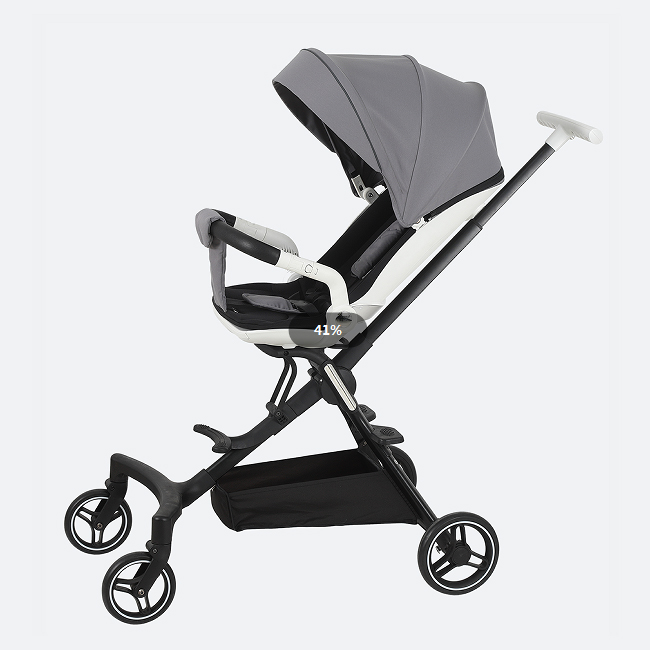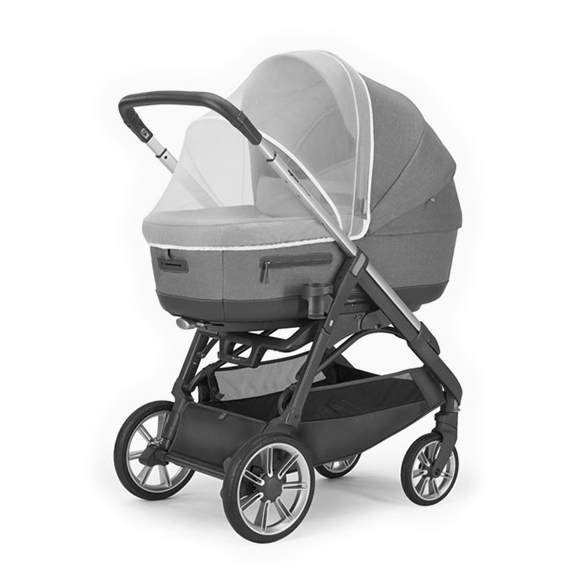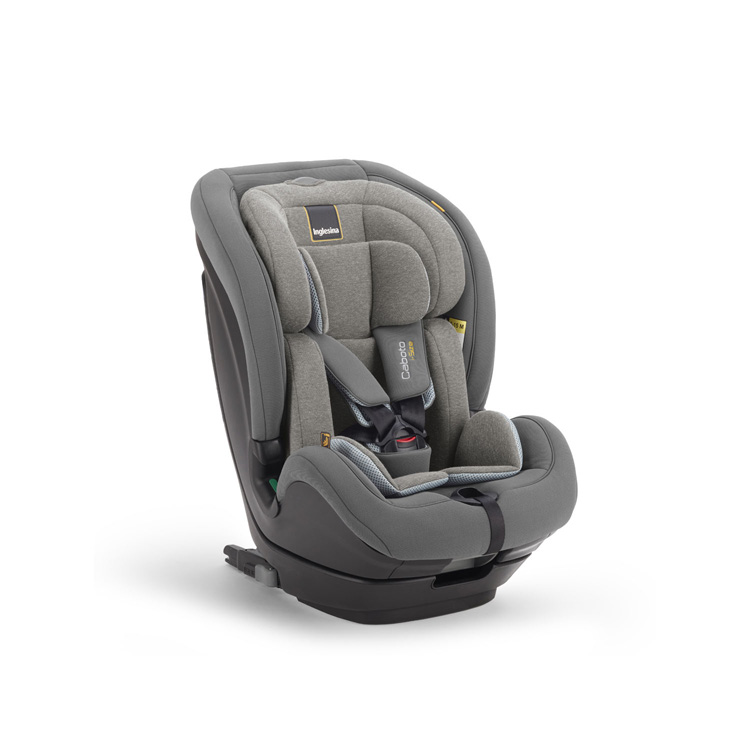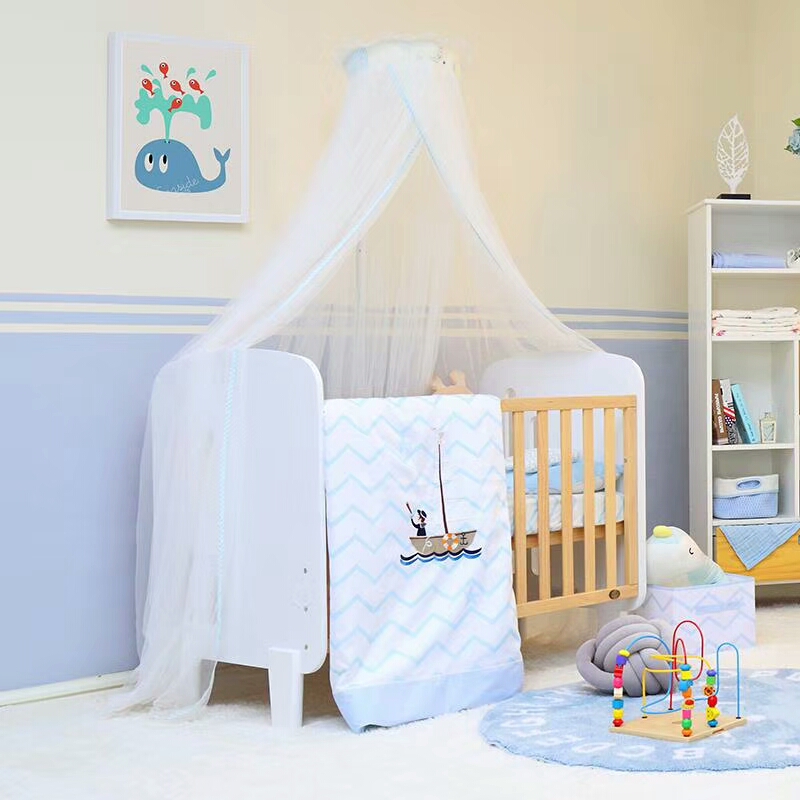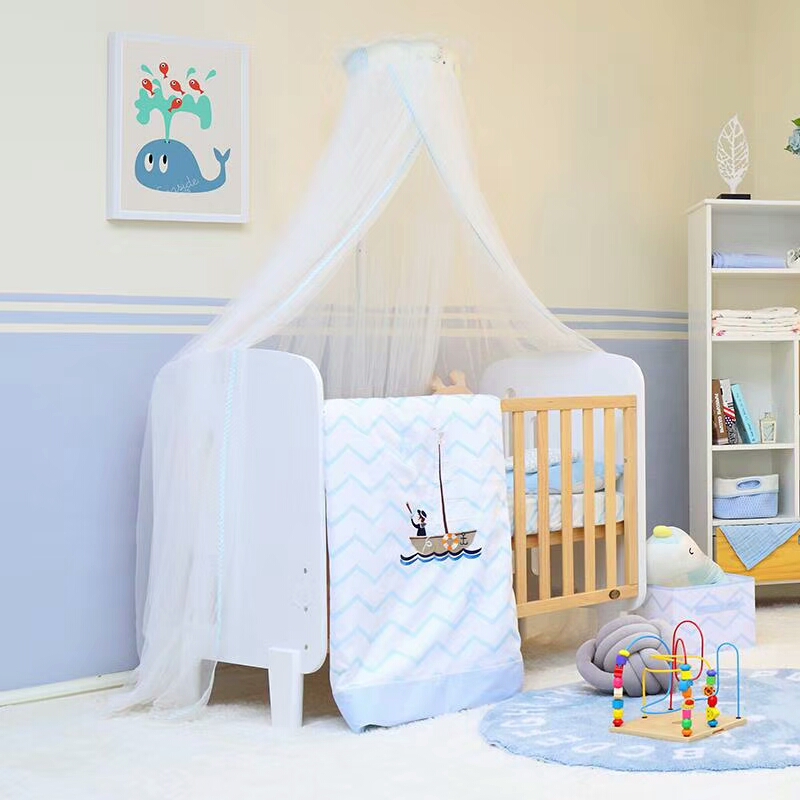1. Fabric: Which One is the "Guardian" of Your Baby's Skin?
A baby's skin is as delicate as a newly bloomed petal and can be easily irritated. When it comes to fabric selection, pure cotton and cotton-linen materials are undoubtedly the best choices. Pure cotton fabric is soft. When it touches the baby's skin, it feels like a gentle cloud, providing a tender embrace. It also has excellent sweat absorption. Since babies tend to sweat during sleep, pure cotton fabric can quickly absorb sweat, keeping the skin dry and preventing skin problems caused by moisture and bacterial growth. Cotton-linen fabric combines the softness of cotton with the breathability of linen, allowing the baby's skin to "breathe" freely.
In contrast, synthetic fiber fabrics, although possibly cheaper, have many hidden dangers. They are not only rough to the touch but may also cause discomfort due to poor breathability, making the baby's skin feel stuffy. More seriously, some synthetic fibers may contain chemical substances that can easily cause allergies, afflicting the baby's skin. Therefore, when choosing baby bedding, be sure to firmly opt for natural materials to build a solid safety line for your baby's skin.
2. Color: What Health Secrets Lie Behind Light and Dark Colors?
Many parents are attracted to brightly colored and richly patterned baby bedding products when making their selections. However, from the perspective of the baby's health, light-colored fabrics are a wiser choice. Fabrics with darker colors usually use more dyes during the manufacturing process. These dyes may contain heavy metals or harmful chemicals, and darker fabrics are more prone to fading. Once the dyes come off, the baby may come into contact with these harmful substances during sleep, and they may even enter the body through breathing or accidental ingestion, posing potential threats to health.
Light-colored fabrics not only use relatively fewer dyes, reducing the risk of harmful substance residues but also make it easier to clearly observe the baby's excrement or stains, facilitating timely replacement and cleaning to maintain the cleanliness of the baby bedding. So, for the baby's health, light and delicate colors are the "right way" in color selection.
3. Size: What Exactly is "Just Right"?
The right size baby bedding is crucial for ensuring the baby's comfortable sleep and safety. If the baby bedding is too small, it cannot fully cover the baby's body, making the baby prone to catching a cold. If it is too large, there is a risk of it entangling the baby's body or head, leading to serious consequences such as suffocation. The ideal size is one that can cover the baby's body while leaving about one foot of extra space. This space allows the baby to stretch their limbs freely without the danger of too much extra space.
When purchasing, be sure to carefully measure the size of the crib and refer to the product size instructions. Also, considering how quickly babies grow, you can choose baby bedding with adjustable designs. This way, it can be flexibly adjusted as the baby grows, extending its service life, which is both economical and practical.
4. Thickness: How to Keep Your Baby Warm and Comfortable Throughout the Year?
As the seasons change, the temperature varies greatly, and babies are more sensitive to temperature changes. Therefore, it is essential to prepare baby bedding of different thicknesses according to the seasons. In hot summer, choose thin and breathable gauze bedding to keep the baby cool. In spring and autumn, when the temperature is moderate, medium-thick cotton bedding provides just the right amount of warmth. In cold winter, thick and warm baby bedding made of materials like down or wool becomes the baby's "little armor" against the cold.
By reasonably matching baby bedding of different thicknesses, you can ensure that your baby is always at a comfortable sleeping temperature and enjoys a sound sleep.
5. Safety and Environmental Protection: Hidden Dangers in Invisible Details
Your baby's health allows no room for carelessness, and the safety and environmental protection of bedding are of great importance. When purchasing, carefully check the product packaging to confirm whether there are relevant safety marks, such as safety standard certifications for baby products. These marks are important guarantees of product quality and safety. Only products that have passed strict inspections can ensure the absence of harmful substances and avoid harm to the baby's health.
In addition, try to choose well-known brands and reliable purchasing channels to avoid buying unbranded products. Regular brands follow strict quality control standards during production, with higher requirements for raw material selection and processing technology, ensuring product safety and environmental protection from the source.
6. Breathability: The Key to Letting Your Baby's Skin "Breathe"
Babies have a high metabolic rate and tend to sweat during sleep. If the baby bedding has poor breathability, sweat cannot evaporate in time, creating a damp and stuffy environment on the bed. This not only makes the baby feel uncomfortable and affects sleep quality but also easily promotes the growth of bacteria and mites, leading to skin problems such as allergies and eczema.
Choose baby bedding with good breathability, such as materials like pure cotton and bamboo fiber. They allow air to circulate freely between the bedding, promptly taking away the heat and moisture emitted by the baby's body, keeping the bed dry and comfortable, and providing a good "breathing" environment for the baby's skin.
7. Practicality and Growth Adaptability: How Can Baby Bedding Accompany Your Baby's Growth?
Babies grow incredibly fast, and a set of baby bedding may soon become unsuitable. To avoid waste, fully consider the practicality and growth adaptability of bedding when making a purchase. Choose bedding that can be easily washed, which facilitates regular cleaning by parents and maintains hygiene. It is best to select products that can be adjusted in size as the baby grows, such as bed sheets and duvet covers with adjustable elastic bands or splicing designs.
In this way, a set of baby bedding can accompany the baby through multiple growth stages, saving costs and reducing the hassle of frequent replacements. At the same time, when choosing styles and patterns, simple designs are more conducive to the baby's visual development and mental health, avoiding visual fatigue caused by overly complex patterns.
Choosing baby bedding requires comprehensive consideration of many aspects. Every detail is related to the baby's safety and health. It is hoped that through the introduction in this article, parents can make the right choices when faced with a wide range of products, creating a warm, comfortable, and safe sleeping world for their babies, allowing them to grow healthily and happily with the company of high-quality baby bedding.



